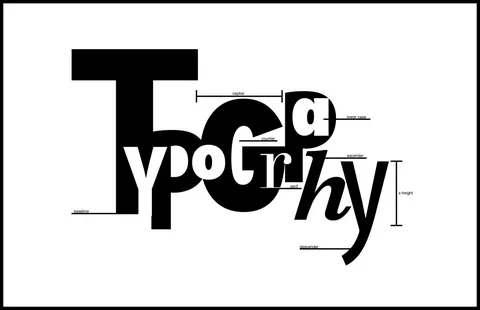In the vast realm of design, fonts stand as the silent architects, shaping the way we perceive and interact with written content. They are more than mere letters; they are the visual language that conveys tone, personality, and intent. In this exploration, we unravel the diverse world of fonts, delving into their origins, evolution, and the impactful role they play in our daily visual experiences.
The Alphabetical Evolution: From Calligraphy to Digital Typography
*1. A Glimpse into the Past: Fonts, rooted in the rich history of calligraphy, have evolved significantly. From painstakingly handcrafted manuscripts to the advent of movable type in the Gutenberg era, each chapter in the history of fonts carries the echoes of artistic expression and technological innovation.
*2. Digital Dawn: The digital age marked a paradigm shift, bringing forth an unprecedented array of fonts. TrueType, OpenType, and PostScript fonts revolutionized the landscape, allowing for greater versatility and customization. Today, designers wield a vast arsenal of fonts, each with its own story and visual identity.
The Diversity of Fonts:
*1. Serif, Sans Serif, and Beyond: Fonts categorize themselves into various families, each with distinct characteristics. Serif fonts, with their elegant tails, often evoke tradition and formality. Sans-serif fonts, on the other hand, exude a modern and clean aesthetic. Script fonts mimic handwriting, while display fonts demand attention with their artistic flair.
*2. Expressive Typography: Font go beyond conveying words; they express emotions and personality. Playful fonts inject a sense of whimsy, while bold fonts command attention. The choice of font can transform a mundane message into a visual masterpiece, invoking the desired response from the audience.
Navigating the Font Landscape: Tips for Designers
*1. Purpose-Driven Selection: The key to effective font usage lies in aligning the choice with the purpose. A formal document may benefit from classic serif fonts, while a contemporary website might thrive with sleek sans-serif options. Understanding the audience and context guides the selection process.
*2. Hierarchy and Harmony: Crafting visual hierarchy with fonts is an art form. Heading fonts distinguish themselves from body text, creating a harmonious flow. Consistency in font choices ensures a polished and professional appearance.
The Future of Fonts: Where Innovation Meets Tradition
Variable Fonts and Beyond: As technology advances, so do fonts. Variable fonts, a recent innovation, allow for fluid adjustments in weight, width, and slant within a single font file. The future promises even more interactive and responsive typography, merging tradition with cutting-edge technology.
Conclusion: The Ongoing Dialogue of Fonts
In the dynamic dialogue between creators and readers, fonts serve as the unspoken mediators. Their evolution mirrors societal changes, artistic movements, and technological leaps. Understanding the nuances of fonts empowers designers to wield this visual language with finesse, ensuring that every written word resonates with its intended impact.

